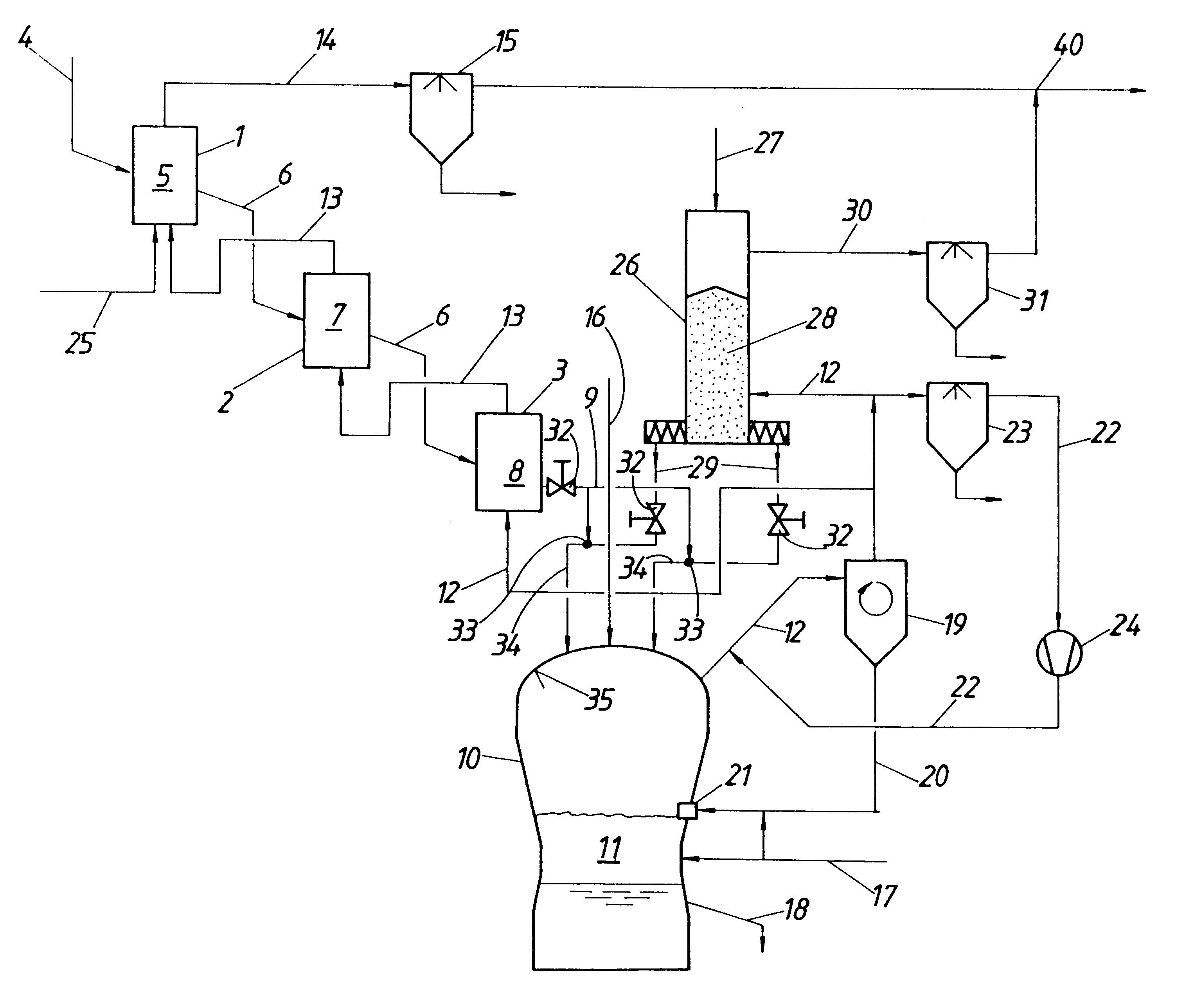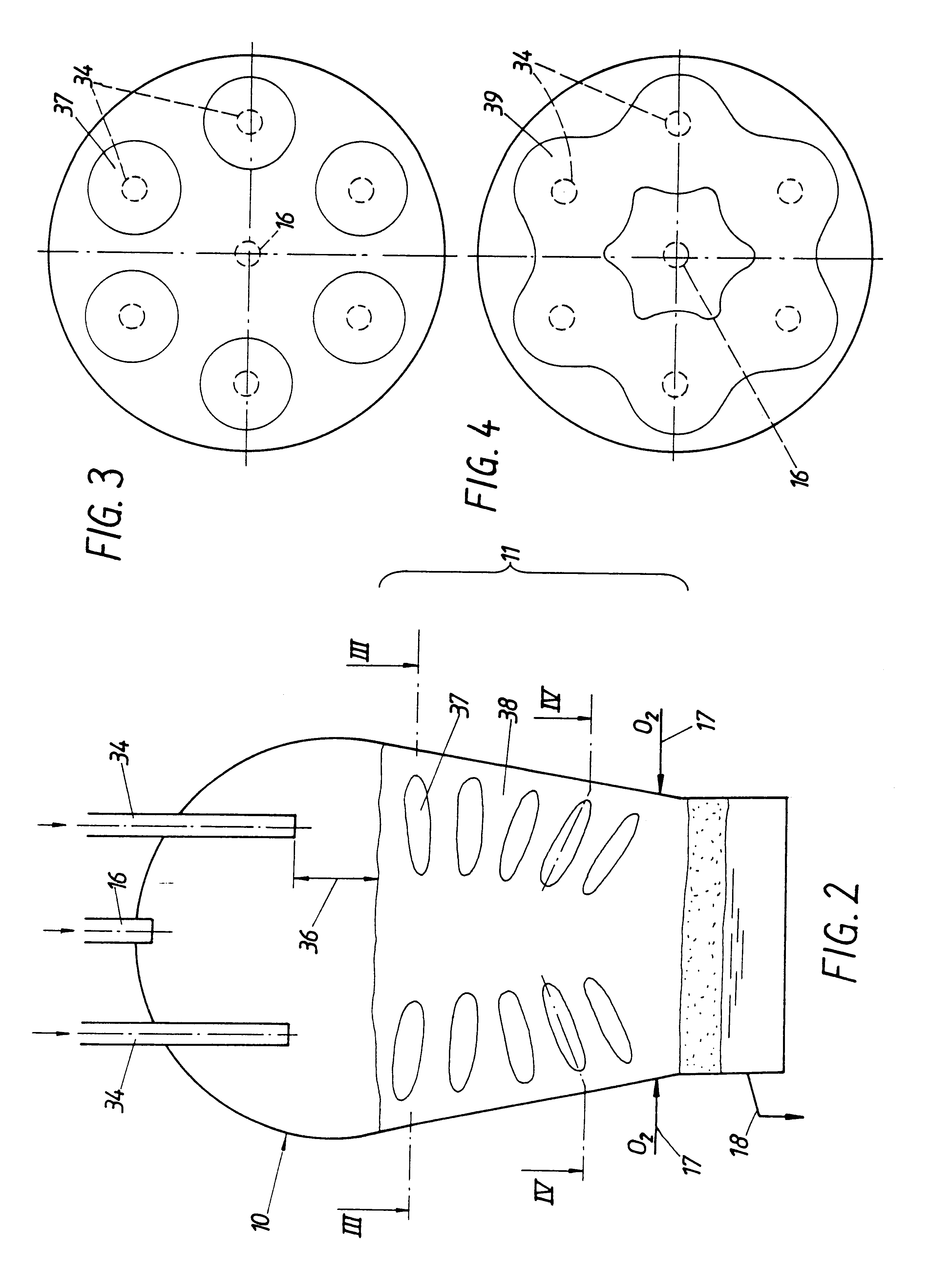Method and plant for producing iron from lumpy and fine-particulate sponge iron
- Summary
- Abstract
- Description
- Claims
- Application Information
AI Technical Summary
Benefits of technology
Problems solved by technology
Method used
Image
Examples
Embodiment Construction
To a plant according to FIG. 1 having a production capacity of 100 t / h pig iron, there are charged 78 t / h lumpy ore and 78 t / h fine-particulate iron-oxide-containing material as well as 38 t / h fluxes. Further, there are charged 104 t / h coal and 56,000 Nm.sup.3 / h O.sub.2.
The lumpy ore (mainly in the form of hematite) charged to the shaft furnace 26 has a chemical composition as shown in Table I and a grain size distribution as shown in Table II:
TABLE II
The fine-particulate iron-oxide-containing material (mainly in the form of hematite) charged to the fluidized bed reactor 1 has a chemical composition as shown in Table III and a grain size distribution as shown in Table IV:
TABLE IV
The chemical composition of the dry fluxes is given in Table V:
The chemical composition of the coal charged to the melter gasifier 10 is given in Table VI:
The pig iron molten in the melter gasifier 10 is of a chemical composition in accordance with Table VII:
Reducing gas forming in the melter gasifier 10 by...
PUM
| Property | Measurement | Unit |
|---|---|---|
| Fraction | aaaaa | aaaaa |
| Fraction | aaaaa | aaaaa |
| Fraction | aaaaa | aaaaa |
Abstract
Description
Claims
Application Information
 Login to View More
Login to View More - R&D
- Intellectual Property
- Life Sciences
- Materials
- Tech Scout
- Unparalleled Data Quality
- Higher Quality Content
- 60% Fewer Hallucinations
Browse by: Latest US Patents, China's latest patents, Technical Efficacy Thesaurus, Application Domain, Technology Topic, Popular Technical Reports.
© 2025 PatSnap. All rights reserved.Legal|Privacy policy|Modern Slavery Act Transparency Statement|Sitemap|About US| Contact US: help@patsnap.com



